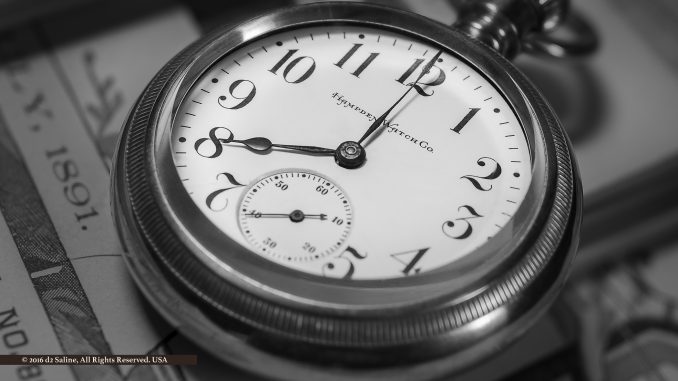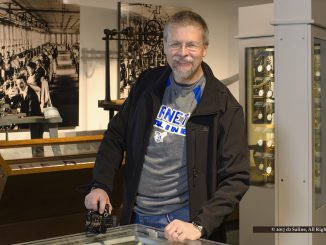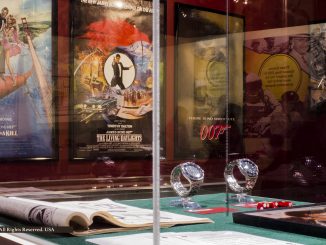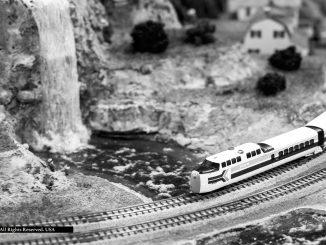
The railroad industry in the United States pre-dates the opening of our own Depot by some four decades. [1,2]
One history describes the advent of “dozens of local railroad networks” — each covering no more than a few miles — having been put in place by 1835. But that was the point at which growth began to happen at an exponential pace, to a total of 9,000 miles of track lain by 1850. Utilizing the same rails for trains traveling in opposite directions meant that a greater number of destinations could be added more quickly and less expensively.
It’s an approach that is still quite common today. Understandably, those two trains need to be coordinated so such that they are not using the same track in the same place at the same time. One of the more familiar stories about the tragedy of failing to follow this rule is that of the 1891 collision near Kipton Ohio, about forty miles this side of Cleveland. [3,4]
Investigators determined that the Toledo express crew was at fault. Their train was late and should not have started out for Kipton, knowing that the fast mail was approaching on the same line. The investigation centered on the engineer’s watches, one of which was possibly four minutes slow. A mere four minutes was the difference between life and death on the line.
The General Superintendent of the line in question, the Lake Shore and Michigan Southern Railroad, appointed Cleveland, Ohio jeweler Webster Ball to investigate time keeping issues on the line. Ball’s investigation resulted in the establishment of watch performance and inspection standards in 1893.
Looking 125 years back from today at these “standard watches” (the proper term for what are more commonly referred to by laymen as “railroad watches”), an understanding of history is often clouded by interests of collectors. Agreement on which pocket watches are proper to discuss before the Webster Ball specifications get murky — becoming contentious in ways that modern valuations ascribed to any such artifacts so often do. [5,6]
At one point in its service, Saline Railroad Depot was also part of the Lake Shore and Michigan Southern Railroad. Passengers and freight had been moving through here regularly for twenty-one years before Kipton. Even then, and before that, in 1850 and in 1830 and in 1826 and as far back as 1812, when the idea of railroad construction was first conceived by one Colonel John Stevens, pocket watches were carried by trainmen to manage the runs; moreover, functioning would have been impossible without these handheld timekeepers. [7,8]
These portable time standards evolved from the true revolution that came mid-century prior. It was seafaring vessels that required the accuracy of reliable falling-weight-driven clocks regulated by pendulums without the obvious impracticality of using such devices on sailing ships. William Harrison ultimately produced his “sea watch” around 1752 as final answer. [9]
Successor watches were functioning within four agreed upon time zones that were in use by late 1883 by voluntary initiative of the various railroad lines in place throughout the United States — unrelated to Kipton. It’s important to emphasize that the fundamental contribution of Webster Ball here was that of setting up routines for the inspection of users’ timekeepers. [10,11,12]
The subsequent 1893 guidelines issued by the General Timepiece Standards Commission eventually adopted by all railroads established important consistencies and performance criteria for all such watches. These included dial legibility, placement of the winding stem, accuracy minimums based on environmental conditions and timekeeper orientation, and certain aspects of mechanism engineering. All standard watches had to keep time accurately “within a gain or loss of no more than 30 seconds a week.” [13]
By way of reference, the Contrôle Officiel Suisse des Chronomètres (COSC) certification currently associated with luxury wristwatches such as by Omega and Rolex allows for deviation by as much as 42 seconds per week. [14]
The 1891 Hampden Watch model shown in the photograph above not only performs to this day within COSC parameters, but would also pass General Railroad Timepiece Standards inspection according to the 1893 checklist. This “Special Railway” in its original Dueber case not been restored. Rather, it has simply undergone prescribed maintenance. [15]
That’s the backbone of how and why Saline Depot was able to function as it did.
References
- “Rise of Monopolies: History of American Railroads” Stanford University.
- “Saline Depot Museum” Saline Area Historical Society.
- “Single Line Operation” Railway Technical Website.
- “Kipton Train Wreck” Nancy Pope, Smithsonian’s National Postal Museum.
- “Railroad Watch” Smithsonian Institution.
- “Just What Is A Railroad Watch?” Kent Singer (November 2000) National Association of Watch & Clock Collectors.
- “Our History: The ‘Little Railroad that Could’” Southern Michigan Railroad.
- “Col John Stevens” National Railroad Hall of Fame.
- “Longitude found: John Harrison” National Maritime Museum, Royal Museums Greenwich.
- “When did the United States start using time zones?” Elizabeth Nix (April 8, 2015) History.
- “On the Ball: The Story of Webb C. Ball & the Railroad Watch” (October 23, 2014) PBS.
- “Accurate Railroad Watches allow Trains to move Safely” Rails West.
- “Approved Railroad Watches” Rails West.
- “Five Things You Should Know About the COSC” Logan R Baker (August 17, 2018) WatchTime.
- “Company Profile: Hampden Watch Co” Pocket Watch Database.



